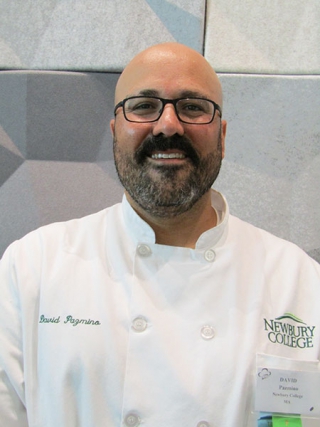
Getting Back (or Going Forward) into Metric
14 August 2018Teaching the base 10 metric system to students with confidence and the right tools.
By Chef David Pazmiño of Newbury College
“Now that actually is not the answer that I had in mind, because the book that I got this problem out of wants you to do it in base eight. But don't panic. Base eight is just like base 10 really - if you're missing two fingers.” Tim Lehrer, New Math
If you have never heard this song by Tim Lehrer, it is definitely worth a listen or view on YouTube. All hilarity aside, why is it so hard for culinarians to break free of British Imperial Units (BIUs)? For years, I have utilized every type of visual and hands-on aids to help teach students about how many tablespoons are in a cup, how many cups there are to a gallon, and how many gallons in a peck, and how many pecks there are to a bushel. And this is just for volumetric units. Add in weights and distance measures and we have opened Pandora’s box.
Ostensibly, there is nothing wrong with BIUs. It uses a fair amount of rote memorization and more intense math skills to understand, especially when scaling recipes and ordering food. It basically lacks simplicity.
What this inevitably leads to are rookie mistakes by students -- not factoring in pounds and ounces when scaling a recipe or mismeasuring with the wrong volumetric measure. These mistakes are teachable moments for my students. But, couldn’t their learning and production process be easier? Measuring and scaling recipes should be a joy and sensible not a dreaded activity because it involves numbers. The British have really made the “pound” king, which also goes by the name octothorpe, but that is a story for another day and time.
Making the case for integrating metric into curriculum
If nothing else, the metric system is based on our natural surroundings and one of the most important elements to all life: water. One milliliter of water weighs one gram that takes one calorie to raise one degree Celsius. Furthermore, the units used are easily converted because they utilize base 10. This means students can multiply and divide by factors of 10 simply by moving the decimal point. (BIUs use base 16.) Quiz: How many tablespoons to a cup? How many cups to a gallon? BIU weights are based on different units (pounds and ounces) along with fractions. Who remembers scaling bread recipes and ending up with 2 pounds 3.25 ounces and then trying to measure that on a spring scale. And, we all know about the scale’s inaccuracy. If you want to be good utilizing BIUs you need to remember all the multiples of 16 so that when scaling or ordering you could quickly get what you needed. Yes, using a calculator is helpful, but moving a decimal over is even faster.
Integrating metric into the classroom isn’t difficult. The biggest items required are scales that measure metric units and volumetric measuring devices that use metric. Many of us already have digital scales and plastic measuring “cans” that have BIUs and metric embossed on the plastic. The other requirement is a good plan of how to integrate metric into the curriculum.
I have students complete a measuring activity where they scale items on a balance scale, spring scale, and then a digital scale. What they measure is inconsequential. I often just have them use water and flour.
As a challenge, there are some mixed units like 1 pound 8 ounces, which they measure on an ounce spring scale. I will also give them units like 61 ounces and they measure it on a digital scale that uses pounds and ounces not just ounces. This means they have to divide by 16 (our lucky number again) to get the pounds with the remainder being ounces. I give them very little instruction except for some cursory notes about measuring and how to use the balance scale.
What I am trying to teach the students is that BIUs are cumbersome. Yes, they can get to the point of memorization, but it is clunky and not easily translatable. And let’s face it, the culinary students of today will be the managers and chefs teaching their workers in the future. So hopefully by the time the students measure different flours and water using metric, they will come to appreciate its ease. They won’t be practitioners of using this measuring system, but hopefully their receptivity will be enhanced.
The Khan Academy created a series of metric-based videos that can be another teaching tool quickly shared or linked within an online learning management system or viewed on YouTube. There are a number of good videos on the site that introduce the topic either in class or via homework.
Another activity that is always fun is to have students convert a recipe from BIUs to metric. This exercise reinforces both systems into the learning process. It also acts as a great exercise for a stronger student in an introductory course that needs an extra task and gives you a repertoire of BIU to metric recipes. Lastly, once you have introduced and begun using it, experiment with students handing in recipes utilizing metric units and the formulas they used to convert it. My students must hand in their daily formulas as well as their final project using “g’s” as I colloquially call the metric system.
The biggest element is you having confidence in teaching metric. If you are excited about teaching, your students will sense the excitement and want to understand it. While it is a newer system, it really is more practical to use.
